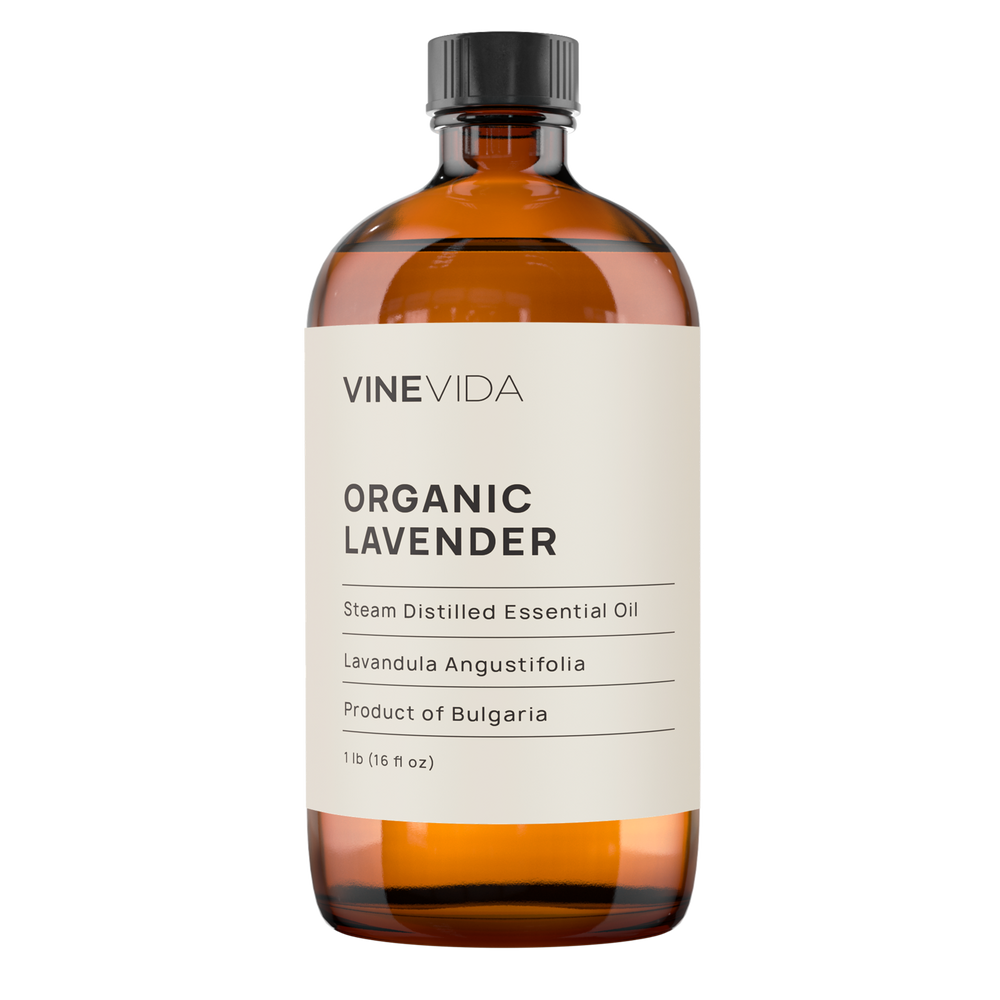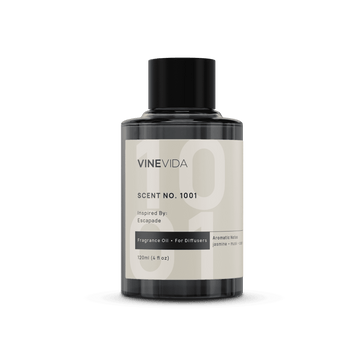Last week, I attended a meeting, and one of my poor colleagues was bundled up in the corner with period pains. It was 110 degrees outside, and she was snuggled up with a hot water bottle, imperfect love! Here in the UK, those kinds of temperatures are unheard of, and I suspect that most plants in my garden would curl up and die, apart from lavender, because she knows how to cope when life turns up the heat. So today, I’m contemplating what the garden has to teach us about lavender essential oil.
Let’s start by moving the attention away from the human world first because that rarely happens. But we can learn so much about a plant from the insects which frequent it. After all, essential oils are little more than concentrations of what the plant has to say with the outside world; most often, those chemicals are made for chats with insects.
The World According To Lavender Plant
If you ever get a chance to stand around a lavender bush and observe the insects, notice how much they delight in it. Indeed, they adore the fragrance (my bees are calmer when I smoke them with dried lavender stalks), but more is going on.
The plant has evolved to be mainly purple. Chemicals called anthocyanins are responsible for the purple, red, and pink petals. These are water-soluble compounds, so they don't make it across distillation to the essential oil. However, that personality still exists when we use lavender essential oil.
Purple is an attractive color. Insects adore purple plants, partly because it is the color they can see best. Bumble bees like purple plants because they are rich in nectar. Nectar-rich plants are generous and generous and are highly evolved plant medicines.
There is rarely just one insect on a purple plant, but several, and many species, all getting on well together. They are chill, relaxed, genial, and mellow. It’s unlikely to think it’s coincidental, but it's likely to cause trouble.
We could learn a great deal from the insects that hang out on lavender.
Also Read: What is Lavender Oil Good for?
Lavender Essential Oil Makes You Feel
Cooler.
In both senses of the word.
You’re more relaxed, and the heat doesn’t feel so oppressive.
Lavender hydrolat, in particular, is deliciously cooling
More relaxed, of course. That means in the immediate and more extended terms, and hopefully, you can sleep better too.
We can extend it a bit.
While it’s not necessarily an oil that imbues confidence (leave that to sweet basil or grapefruit to sort out those issues), lavender says, well, I’m not that bothered what other people think anyway! I’m just happy doing my own thing.
It’s a quiet oil. As we know, it knows about comfort and sleep, but it’s a plodder. It doesn’t expect you to stop and chat with it like mandarin does or hear about your woes as chamomile enjoys.
Lavender just sits beside you and holds your hand.
It’s like a good book waiting for you to return. Always patient, completely dependable, just warm sunshiny bliss.
Also Read: How To Use Lavender Oil For Sleep?
Lavender Essential Oil Makes You Feel
Less creaking, less moan-y and groan-y in your bones, less inflamed in your moods and skin.
Don’t tell the FDA I said so, but it also works tremendously on that word that rhymes with main and begins with P.
Menstrual cramps, creaking backs, spasms, and clenches all relax with lavender.
Soothing, calming, stroking, sighing.
Beautiful blissful lavender.
Lavender Essential Oil Also Helps With
Bumps and bruises, cuts, scrapes, and burns.
Not only because it soothes and reduces inflammation but also because it keeps wounds nice and clean from bacteria and germs.
Also Read: What Mixes Well with Lavender Essential Oil?
Snoozy Lavender Essential Oil
It’s perhaps time to get on my lavender-scented soap box or one.
Does lavender essential oil help you sleep?
Yes, it does.
Should I use it to help my baby sleep?
Well, that depends. Do you usually smell like a lavender bush?
Ask your child to accept strangers and trust them if you don't. They won’t. They navigate those first few months of life via scent, and they want to be able to smell mom.
I wrote a more detailed post about that here.
Next….
“ I read that I should put lavender on my pillow to help me sleep. Is that right?”
You’d think so, wouldn’t you?
But at the moment, the jury is out and veering towards, no, that’s probably wrong. Because the thing is, as soon as we fall into a deep sleep, our sense of smell switches off. We no longer perceive the smell of lavender or smoke if there is a fire. That’s why we have smoke alarms. Better to have a nice warm lavender bath or to make a lavender lotion or massage oil and rub it on. That way, you are not relying on olfaction to do the job.
Anti-Microbial Lavender Essential Oil
Yyyyeeeesssss, it is anti-microbial, but there are better oils, to be honest.
Blend it with tea tree to clean up bumped knees
Add a drop of chamomile or dill essential oils to massage onto the abdomen for tummy upsets.
Yes, the lavender essential oil will do a good job if it's the only one you have, but its main skill is getting you to relax.
Always try to play an essential oil’s strengths.
Also Read: Is Lavender Oil Good For Hair?
A Quick Warning About Lavender Essential Oil
Lavender is probably the first essential oil everyone gets. We all hear how wonderful it is and how you can use it safely for everything. (And yes, that is true. I drive my family mad with it!) How great it is for spots and hormonal balance. Perhaps most importantly, it is so great for relaxation and sleep. So consequently, we surround ourselves with it. But often, people don’t associate you with the fact they are starting to suffer from dry skin with all the lavender oil they have been using.
Also Read: How To Use Lavender Oil For Anxiety?
How Lavender Essential oil Affects The Skin
Essential oils do not have side effects, but they do have many main effects. One of those is how it responds to the sebaceous glands in our skin. It’s a great indication of how clever the skin is. These glands secrete sebum, an oily substance the body makes to nourish and protect the skin against infection. Somehow, and don’t ask me how, but the sensors in the skin recognize certain constituents in lavender, think, “Oh, we have plenty of oil here…” and switch sebum production down.
That’s fabulous if you struggle with greasy skin and spots, but not great if your complexion is dry or combination.
Don’t forget that essential oil constituent travels through the blood system, right around the body. So regardless if you are using it in the bath to help you sleep or using it in a moisturizer, all your skin will gradually get drier.
Actually, in my opinion, the same applies to oil generally. I’m not convinced you should ever put loads of oil on your skin if your complexion is dry.
In all cases, use an aqueous cream and add your essential oils to it. Aqueous is water-based; to hydrate dry skin, you need water. Incidentally, oily skin also tends to look better if you hydrate it.
Add one or two drops of lavender essential oil in an aqueous lotion fantastic for greasy skin.
If you have combination skin, use ylang-ylang instead. Everything about ylang-ylang is balancing. It balances hormones as well as balancing out combinations in the skin.
If you are using lavender in the bath and you’ve noticed this happening, perhaps try some geranium, chamomile, vetiver, or valerian to help you sleep instead.
Also Read: Is Lavender Oil Good for Skin?
Conclusion
I find that the best way to use lavender essential oil is for first aid. If we have tumbles or scrapes, or if I am having a very stressful day. I use it the rest of the time as a small part of a larger blend. I let other oils do the work and have lavender there almost just to keep everyone else in the concoction better, a kind of aromatherapeutic HR department, if you will! It is, hands down, the most important essential oil, but get creative with other oils too, or you will regret it when you have to sort out your skin.
Also Read: What Blends Well With Lavender Essential Oil?














